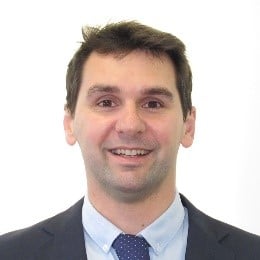Application of Geophysical Methods for Hydrogeology
A special issue of Water (ISSN 2073-4441). This special issue belongs to the section "Hydrogeology".
Deadline for manuscript submissions: 25 June 2024 | Viewed by 10036
Special Issue Editors
Interests: hydrogeology; water management; near-surface geophysics; groundwater resources; coastal aquifers; managed aquifer recharge
Interests: groundwater resources; hydrogeochemistry and water quality; seawater intrusion; coastal aquifers; contamination of groundwater; vadose zone; hydrogeology of volcanic terrains; water–rock interaction
Special Issues, Collections and Topics in MDPI journals
Interests: geophysical prospecting; water management; near-surface geophysics; geophysical prospecting; groundwater resources; hydrogeochemistry
Special Issue Information
Dear Colleagues,
The characterization of subsoil and its hydraulic properties are essential for groundwater and surface water management but are often difficult to evaluate from traditional borehole drilling, water well and piezometer pumping tests or soil sampling techniques. Traditional soil sampling methods and the use of devices to obtain hydraulic properties in the field, such as permeameters or humidity sensors, typically only provide data from the upper layers, and borehole drilling is a destructive and expensive technique, which requires accessible areas to place heavy machinery and only provides spotted information. The integration of geophysical data into direct hydrogeological measurements is a challenging issue that could be used to characterize, monitor, and investigate hydrological parameters and processes in the vadose zone and aquifers at a variety of resolutions and over many spatial scales in a minimally invasive manner.
This Special Issue of Water aims to gather the advances in and obstacles associated with using geophysical methods, with a special focus on case studies demonstrating its potential to improve our understanding of hydrogeological parameters in vadose and non-vadose zones used to modelized groundwater flow, study the transport of substances and, therefore, improve the aquifer knowledge and manage many important processes such as contamination or saltwater intrusion. Papers on novel data acquisition procedures and innovative hydrogeological mappings, hydrological parameter estimation and the monitoring of hydrological processes are welcome. A focus on the integration of geophysical and hydrogeological measurements and petrographic relationships will also be appreciated.
Dr. Alex Sendros
Prof. Dr. María del Carmen Cabrera Santana
Prof. Dr. Albert Casas Ponsati
Guest Editors
Manuscript Submission Information
Manuscripts should be submitted online at www.mdpi.com by registering and logging in to this website. Once you are registered, click here to go to the submission form. Manuscripts can be submitted until the deadline. All submissions that pass pre-check are peer-reviewed. Accepted papers will be published continuously in the journal (as soon as accepted) and will be listed together on the special issue website. Research articles, review articles as well as short communications are invited. For planned papers, a title and short abstract (about 100 words) can be sent to the Editorial Office for announcement on this website.
Submitted manuscripts should not have been published previously, nor be under consideration for publication elsewhere (except conference proceedings papers). All manuscripts are thoroughly refereed through a single-blind peer-review process. A guide for authors and other relevant information for submission of manuscripts is available on the Instructions for Authors page. Water is an international peer-reviewed open access semimonthly journal published by MDPI.
Please visit the Instructions for Authors page before submitting a manuscript. The Article Processing Charge (APC) for publication in this open access journal is 2600 CHF (Swiss Francs). Submitted papers should be well formatted and use good English. Authors may use MDPI's English editing service prior to publication or during author revisions.
Keywords
- hydrogeophysics
- petrophysics
- hydrogeology
- water management
- near-surface geophysics
- groundwater resources
- coastal aquifers
- aquifer characterization
- vadose zone
- saturated zone
- earth critic zone
- water–rock interaction
- groundwater contamination







